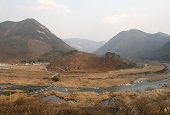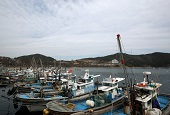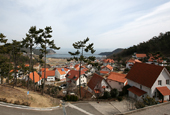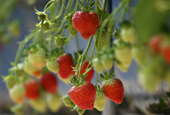The county is located 29 kilometers south of Jeonju, the provincial capital. Seventy percent of the district consists of mountains, including Seongsusan, Godoeksan and Baeknyeonsan, while wide plains can be easily found in the area surrounding the Seomjingang River.
According to legend, the name of the Seomjingang River, the fourth longest on the Korean Peninsula, consists of seom (섬, 蟾), meaning toad, and jin (진, 津), which indicates a port. The legend says that tens of thousands of toads cried out when pirates advanced to the mouth of the Seomjingang River in 1385 during Goryeo times. The pirates were surprised to see the toads and fled to the present Gwangyang, in Jeollanam-do (South Jeolla Province).
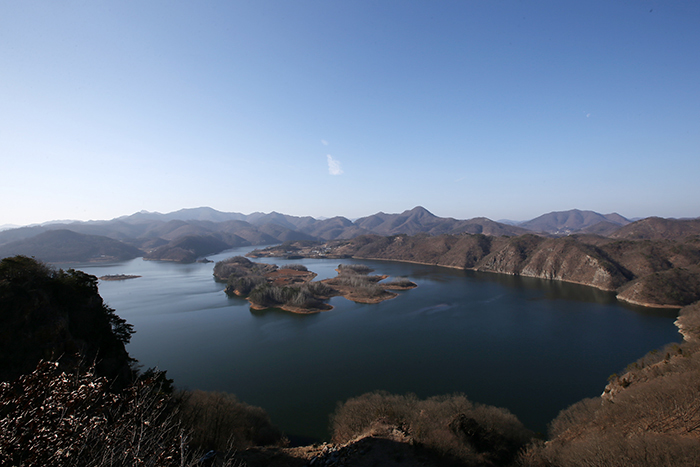
Okjeong-ho Lake, formed after the Seomjingang Dam was built in 1965, is known for its heavy, wet fog, which is reinforced by the large variance between daytime and nighttime temperatures. Bungeoseom Island sits in the middle of the manmade lake.
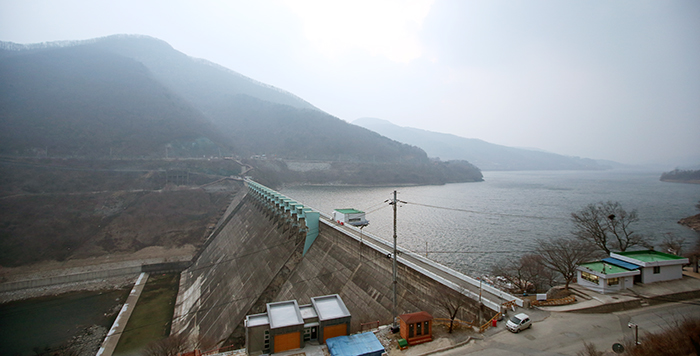
The Seomjingang Dam, Korea's first multipurpose dam, provides water for irrigation and drinking water for residents in the surrounding area.
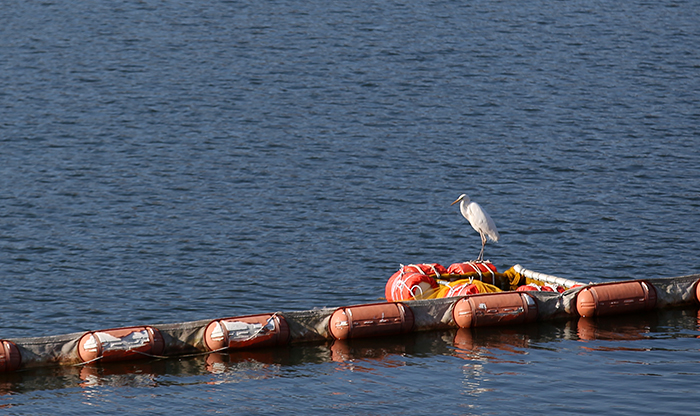
The upper reaches of the Seomjingang River are famous as a white heron habitat.
The Seomjingang Dam, built in 1965 as part of Korea's first Five-Year Economic Development Plan (1962-1966), provides irrigation for farms and drinking water for residents of the surrounding area. It is Korea's first multipurpose dam, and it is 64 meters high and 344 meters wide. It can store up to 466 million tons of water and supplies water for irrigation in the western plains of Jeollabuk-do, including Jeongeup, Gimje and Buan cities.
Industry
The major industry in Imsil is agriculture and 17 percent of its area consists of farmland. A range of produce, in particular vegetables, is grown in greenhouses, too, and chilies and cucumbers are widely cultivated. Chilies grown in the county have a high capsaicin content, which is responsible for the pepper's spicy taste, and thick skin, because of the large variance between day- and nighttime temperatures. There are large floricultural parks in Jucheon-ri, Osu-myeon, and roses grown there are not only bought in Korea but are also exported. Forest products including chestnuts, gingko nuts, walnuts and wild greens & fruits, like pears and peaches, are also produced in large quantities.
The honey business is quite developed in Deokchi-myeon, Gangjin-myeon, and Unam-myeon, and a large amount of domestic honey is produced here. There is a large milk factory in Sinpyeong-myeon, and the dairy business, including cheese manufacturing, is focused in Imsil-eup. In fact, cheese is one of the major products of the county and there is a long history of cheese-making in Imsil-eup.
Imsil was the first place in Korea where cheese was produced. In 1967, Belgium-born Catholic priest Ji Jung-hwan (b. 1931), whose birth name is Didier t'Serstevens, produced cheese with milk from two goats he received from another priest in a church nearby. Now, there are 12 ranches across Imsil producing cheese and yogurt from cow milk. Visitors can try making their own cheese at the Imsil Cheese Theme Park.
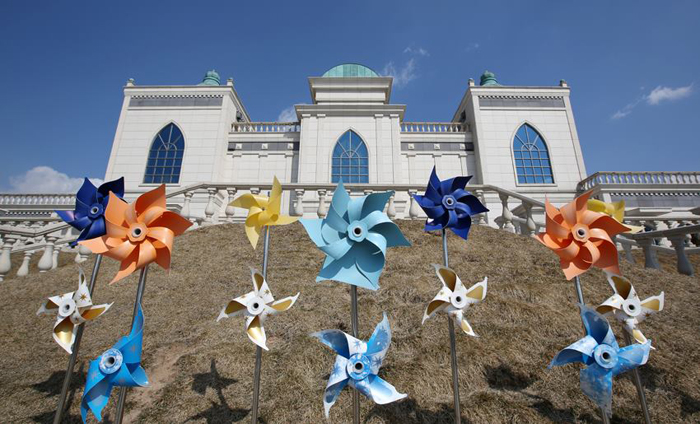
Visitors can try making their own cheese at the Imsil Cheese Theme Park. They also have the opportunity to look around the exhibits about the history of Imsil cheese and the process of making cheese.
History and tourism
History in Imsil dates back to the Samhan, or Proto-Three Kingdoms, period of Korean history around 200 B.C. The land belonged to Mahan, one of the three Han states, and was called Cheongung-hyeon. It got the name Imsil-gun during the Unified Silla period (676-935) and became Imsil-hyeon during Joseon times (1392-1910). In 1896, it was renamed Imsil-gun, again, and absorbed six adjacent myeon administrative units. Now, the county consists of Imsil-eup and 11 myeon administrative units, including Unam-myeon, Osu-myeon and Gwanchon-myeon.
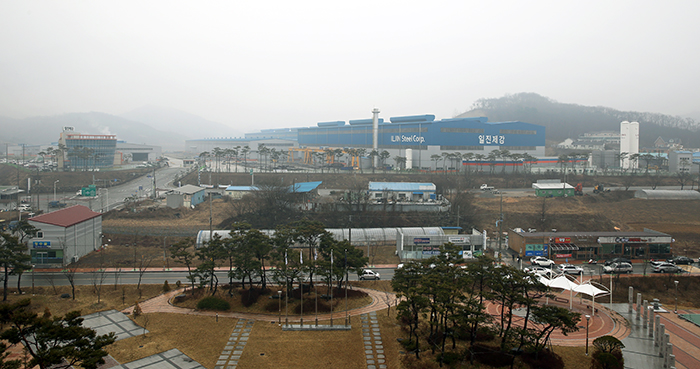
A view of Imsil-gun County as seen from the top of the town hall.
Due to its long history, the county has many historic locations. There is a monument dedicated to dogs in Osu-ri, Osu-myeon (獒樹面). As can be seen by the monument itself, Osu-myeon is known for an ancient legend about a loyal dog. The name Osu-myeon literally means, "a town of dogs (獒) and trees (樹)." The name came from Unified Silla times about one thousand years ago. A man named Kim Gae-in was raising a dog. One day when there was a wild fire, the dog jumped into the water, got itself soaking wet and then rolled around in the grass surrounding its master. The dog saved its master's life, but died in the end. The owner buried his dog and stuck his cane in the ground to remember the spot. According to the tale, the cane grew into a zelkova tree. A dog statue was built there in 1994.
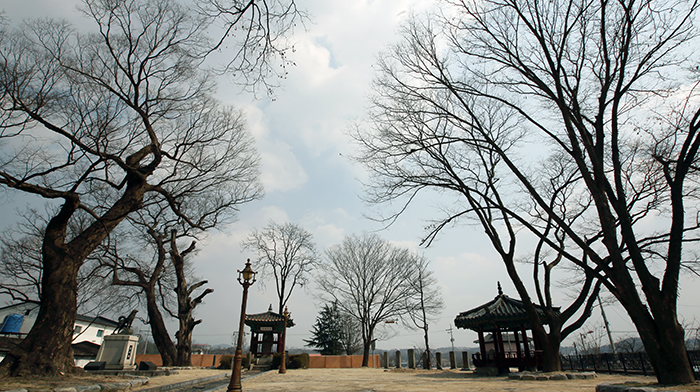
Osu-ri in Osu-myeon, Imsil-gun County, is famous for the legend of a loyal dog that sacrificed itself to save its master.
Sangiam Temple atop Seongsusan Mountain was originally called Doseonam when Doseonguksa, a Buddhist monk, built a temple there in 875 during Unified Silla times.
According to another legend, the first king of Joseon, Yi Seong-gye (r. 1392-1398), prayed for 100 days with Muhakdaesa, a famous Buddhist monk. He then received a divine revelation after a victory over pirates in a battle called Hwangsandaecheop. Later, Yi founded the Joseon Dynasty and named the place Sangiam. He also wrote, "Samcheongdong," on a rock near the temple.
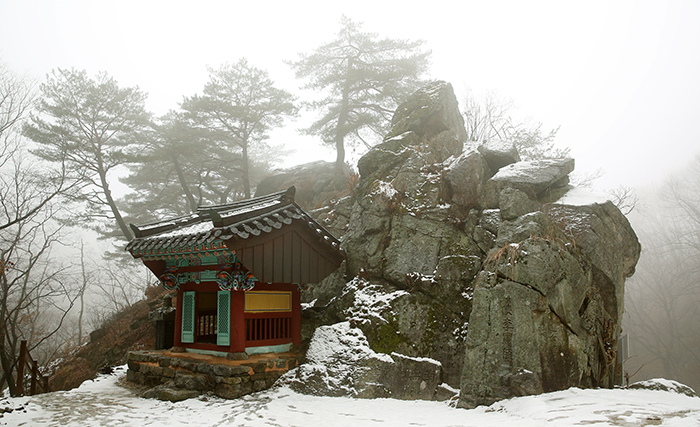
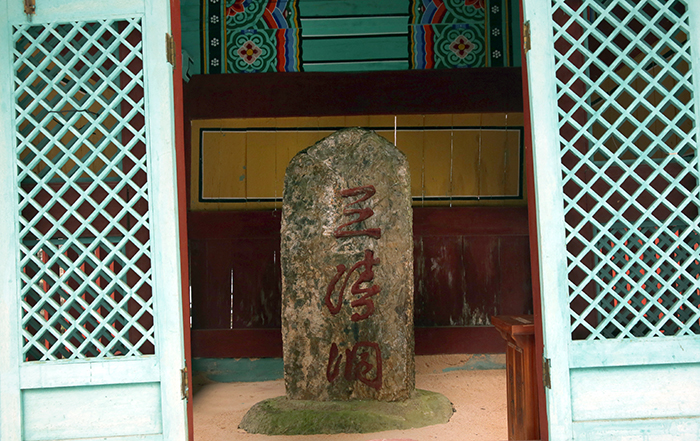
(Top) Legend says that the first king of Joseon, Yi Seong-gye (r. 1392-1398), prayed for 100 days at Sangiam Temple atop Seongsusan Mountain. (Bottom) The rock reads, "Samcheongdong," an inscription made by Yi Seong-gye.
Okjeongho Lake is a manmade reservoir created by the construction of Seomjingang Dam and is one of the major tourist attractions in Imsil-gun County. The lake is located in the upper reaches of the Seomjingang River, which is known for its clear water. Due to the large difference between day- and nighttime temperatures, a heavy fog occurs there quite frequently. The scenery around the lake is especially notable in the spring with flower blossoms and in the autumn with changing foliage. Photographers often come here and spend days taking pictures of the heavy fog. Photographs of the lake shrouded in heavy fog often show up in photo exhibits.
Bungeoseom Island in the middle of the lake is named thus because it looks like a goldfish, or bungeo. The roads around the lake are often chosen as one of the 100 most beautiful roads in Korea. The place is also known as a white heron habitat.
The Pilbong Cultural Village was founded in 2009 to preserve Pilbong Nongak, a type of traditional folk music. Visitors can watch folk music performances every Saturday from June through August. It also has related exhibits and seminar halls. It is host to many folk music festivals, including the Jeongwol Daeboreum Gut Festival in late February and the Pilbong Maeul Gut Festival in mid-August every year. Chwirakwon, a Hanok hotel, can accommodate up to 60 people and has different types of rooms for two, three and five people.
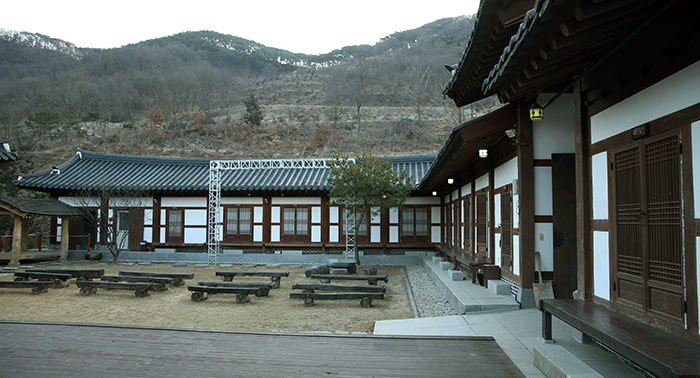
Chwirakwon, a Hanok hotel that is part of the Pilbong Cultural Village, has a large central yard where folk music performances are held.
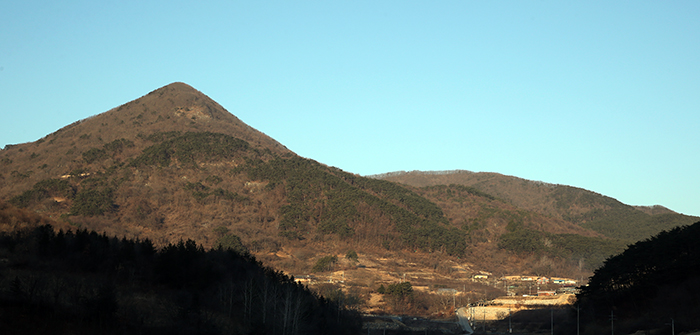
Pilbongsan Mountain can be seen from Chwirakwon in the morning.
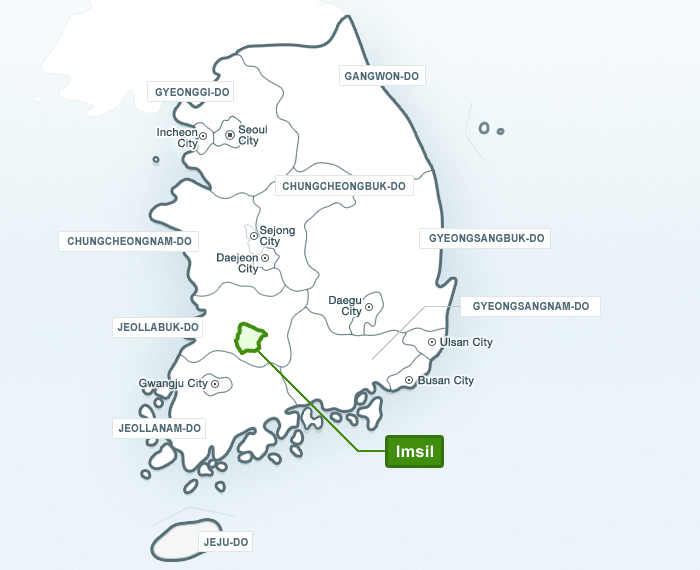
Imsil-gun County is in Jeollabuk-do.
How to get to Imsil-gun County
From Seoul: Gyeongbuk Expressway - Cheonan·Nonsan Expressway - Honam Expressway - Imsil·Pohang Express Way - Jeonju-Gwangyang Express Way - Imsil. It takes about three hours. Trains and express buses to Imsil are also available.
From Busan: Namhae No. 2 Expressway Local Line - Namhae Expressway - Tongyeoung·Daejeon Jungbu Expressway - 88 Olympic Expressway - Jeonju·Gwangyang Expressway - Imsil. It takes about 3 hours and 16 minutes.
From Gwangju: Honam Expressway - 88 Olympic Expressway - Jeonju·Gwangyang Expressway - Imsil.
By Limb Jae-un
Photos: Jeon Han
Korea.net Staff Writers
jun2@korea.kr
